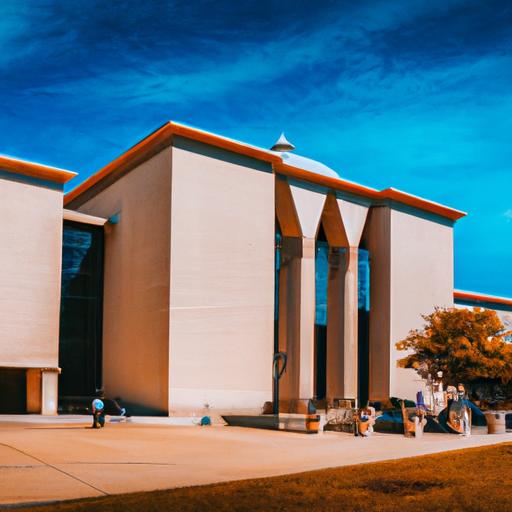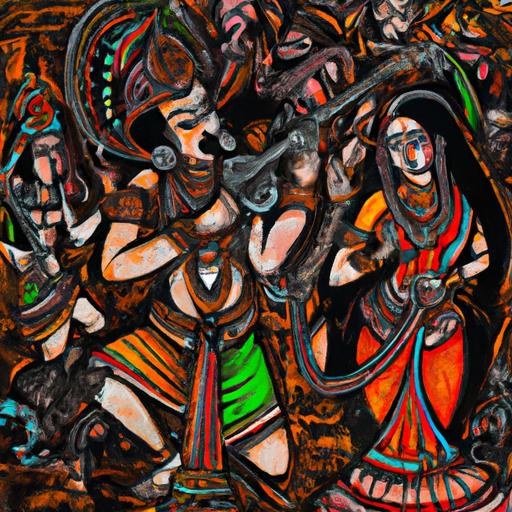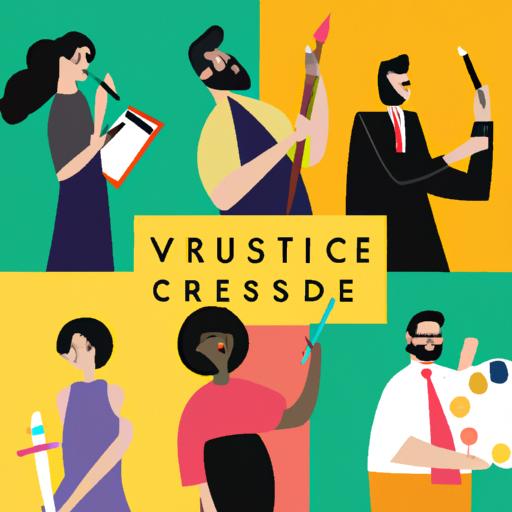Traditional Art in NCR Region: A Timeless Cultural Tapestry
The NCR region, encompassing the vibrant city of Delhi and its neighboring areas, boasts a rich heritage of traditional art forms that have withstood the test of time. From intricate paintings to mesmerizing sculptures, the artistic expressions found in this region are a testimony to its cultural wealth. In this article, we will delve into the captivating world of traditional art in the NCR region, exploring its historical roots, highlighting its significance, and emphasizing the need to preserve these invaluable art forms.
Preserving the Threads of Tradition
Traditional art holds a profound place in the hearts of the people, serving as a mirror reflecting their customs, beliefs, and identity. It is a living testament to the region’s cultural heritage, connecting present generations with their ancestors through visual storytelling. The NCR region, with its diverse communities and historical influences, showcases a kaleidoscope of traditional art forms that have been passed down through generations.
Embodiment of Culture and Identity
Each stroke of the brush, every chisel mark, and every intricate detail in traditional NCR art embodies the essence of the culture and identity of the region. These art forms encapsulate the stories, myths, and historical events that have shaped the local communities, creating a sense of belonging and pride. From the vibrant Madhubani paintings of Bihar to the delicate Pichwai paintings of Rajasthan, traditional art in the NCR region is an exquisite tapestry of colors, symbols, and narratives.
Keeping the Flame Alive
In an era of rapid modernization, the preservation of traditional art forms is of utmost importance. By safeguarding these artistic traditions, we ensure the continuation of our cultural legacy and provide a platform for future generations to connect with their roots. Moreover, traditional art plays a vital role in boosting tourism and bolstering the economy of the NCR region, attracting art enthusiasts and connoisseurs from around the world.
Conclusion
As we embark on this journey to explore traditional art in the NCR region, let us marvel at the beauty and intricacy of these art forms. From the graceful strokes of a miniature painting to the rhythmic beats of a traditional dance, traditional art is a timeless treasure that deserves our admiration and protection. Together, let us celebrate the vibrant heritage of the NCR region and ensure that these artistic expressions continue to thrive for generations to come.
History of Traditional Art in the NCR Region
Origins and Evolution of Traditional Art in the NCR
Traditional art in the NCR region traces its roots back to ancient times, where it evolved in symbiosis with the cultural and historical developments of the area. The region’s geography and climate played a significant role in shaping the art forms, with influences from various dynasties and empires leaving a lasting impact on the artistic expressions that emerged.
From the intricate stone carvings of the Maurya and Gupta periods to the exquisite Mughal miniature paintings, the NCR region has been a melting pot of artistic influences. These art forms evolved over centuries, combining indigenous techniques with outside influences, resulting in a unique blend of styles that encapsulate the rich cultural heritage of the region.
Influences and Cultural Significance
The NCR region has been a crossroads of cultures, attracting influences from various parts of the Indian subcontinent. The intermingling of traditions brought a diverse range of artistic styles, materials, and techniques that enriched the local art scene. Whether it be the vibrant Rajasthani folk art or the serene spirituality of Tanjore paintings, each art form carries the essence of the communities that nurtured them.
Traditional art in the NCR region holds immense cultural significance, serving as a visual representation of the region’s history, mythologies, and religious beliefs. These art forms often depict epics, folklore, and deities, allowing individuals to connect with their heritage on a profound level. Additionally, traditional art acts as a means of cultural preservation, safeguarding the stories and traditions that might otherwise be forgotten in the face of modernization.
Notable Traditional Art Forms in the Region
The NCR region boasts a plethora of traditional art forms that have captivated audiences for generations. Some notable examples include:
1. Madhubani Paintings
Originating from the Mithila region of Bihar, Madhubani paintings are characterized by their intricate line work and vibrant colors. These paintings often depict scenes from Hindu mythology, nature, and daily life, showcasing the rich cultural heritage of the region.
2. Pichwai Paintings
Hailing from the state of Rajasthan, Pichwai paintings are intricate works of art that depict tales of Lord Krishna. These paintings are known for their exquisite detailing and use of gold leaf, creating a sense of opulence and divinity.
3. Warli Art
Warli art, originating from the tribal communities of Maharashtra, is characterized by its simplistic geometric patterns and stick-figure depictions. This art form showcases the tribal way of life and their deep connection with nature.
These are just a few examples of the diverse traditional art forms that have flourished in the NCR region. Each art form carries a unique story and cultural significance, contributing to the rich tapestry of traditional art in the region.
Traditional Art Techniques and Materials
Unveiling the Artistic Craftsmanship
Traditional art in the NCR region is a testament to the exceptional skills and craftsmanship of the artists who bring these art forms to life. Let’s delve into the techniques and materials that form the foundation of these captivating creations.
Techniques that Stand the Test of Time
Traditional art in the NCR region encompasses a wide array of techniques, each with its unique characteristics and methods of execution. From the intricate brushwork of miniature painting to the meticulous stone carving, these techniques have been passed down through generations, preserving the authenticity of the art forms.
Embracing Diverse Materials
The choice of materials in traditional art is crucial in capturing the essence and aesthetic appeal of the art form. The NCR region showcases a fascinating range of materials utilized in its traditional art forms. Natural pigments derived from minerals and plants bring colors to life, while the canvas can range from silk and cotton for textiles to wood and stone for sculptures.
Traditional Art Forms of the NCR Region
The NCR region is a melting pot of traditional art forms, each with its distinct techniques and materials. Let’s explore some notable examples of traditional art forms that have flourished in this vibrant region.
Miniature Painting: A World in Miniature
Miniature painting, characterized by intricate brushwork and vibrant colors, is a traditional art form that has thrived in the NCR region for centuries. With stories from mythology, history, and folklore adorning these miniature canvases, they offer a glimpse into a mesmerizing world within their compact dimensions.
Terracotta Sculptures: Sculpting Earth’s Magic
Terracotta, a medium derived from clay, has been meticulously shaped by skilled artisans to create awe-inspiring sculptures. From religious idols to decorative figurines, these earthy creations embody the region’s cultural and spiritual heritage.
Preserving and Conserving Traditional Art Techniques
Preservation and conservation efforts play a vital role in safeguarding traditional art techniques for future generations. Various initiatives have been undertaken to ensure the continuity of these art forms, including documentation, training programs, and creating awareness about the cultural significance of traditional art.
Conclusion
The techniques and materials used in traditional art in the NCR region are a testament to the artistic mastery and ingenuity of the craftsmen. From the delicate brushstrokes of miniature paintings to the sculpting of clay into intricate sculptures, these art forms have captivated audiences for generations. The preservation and conservation of these techniques are essential to maintain the authenticity and cultural heritage of the NCR region’s traditional art. As we continue our exploration, let us appreciate the dedication and skill that goes into preserving these cherished art forms.
Prominent Traditional Art Forms in the NCR Region
Exploring the Richness of NCR’s Traditional Artistry
The NCR region is a treasure trove of diverse traditional art forms that have flourished over centuries. Let us delve into some of the most prominent art forms that captivate the senses and reflect the cultural heritage of the region.
1. Madhubani Paintings: A Riot of Colors
Madhubani paintings, also known as Mithila paintings, originated in the Mithila region of Bihar. These vibrant artworks feature intricate patterns and bold colors, depicting scenes from mythology, nature, and everyday life. With their distinctive style and use of natural dyes, Madhubani paintings have gained international recognition, making them a pride of the NCR region.
2. Pichwai Paintings: Divine Splendor
Originating in Rajasthan, Pichwai paintings are exquisite artworks that depict Lord Krishna in various postures and settings. These intricate paintings, often adorned with gold leaf and vibrant pigments, are traditionally used as temple hangings. The intricate detailing and devotion showcased in Pichwai paintings make them an integral part of the NCR region’s artistic heritage.
3. Kathak Dance: A Mesmerizing Narrative
Kathak, a classical Indian dance form, finds its roots in the NCR region. Known for its intricate footwork, graceful movements, and expressive storytelling, Kathak mesmerizes audiences with its rhythmic poetry. With its origins in the Mughal courts, Kathak has evolved over time, incorporating elements of Persian and Hindustani music. Renowned Kathak dancers from the NCR region have contributed significantly to preserving and promoting this enchanting dance form.
4. Warli Art: Tribal Tales Unveiled
Hailing from the tribal communities of Maharashtra, Warli art is a simple yet captivating form of folk painting. Using basic geometric shapes and white pigment on a brown background, Warli paintings narrate the tales of daily village life and celebrate the connection between humans and nature. This art form, with its rustic charm, has gained popularity worldwide and remains an integral part of the NCR region’s artistic landscape.
Celebrating Artistic Maestros
Behind every traditional art form in the NCR region, there are skilled artists who have dedicated their lives to honing their craft and preserving their cultural heritage. Notable artists like Sita Devi, Bhuri Bai, and Birju Maharaj have not only mastered their respective art forms but have also contributed to their evolution and promotion. Their artistic brilliance continues to inspire generations of artists and enthusiasts alike, ensuring the legacy of traditional art in the NCR region lives on.
By exploring the diverse traditional art forms and acknowledging the contributions of these talented artists, we can truly appreciate the richness and cultural significance of the NCR region’s artistic heritage. Let us continue to support and celebrate these art forms, ensuring they remain vibrant and cherished for generations to come.
Challenges and Preservation Efforts
Upholding Traditions in a Changing Landscape
The preservation of traditional art forms in the NCR region faces numerous challenges in the wake of modernization. As urbanization takes center stage, the younger generation is increasingly drawn to contemporary art and digital mediums, leading to a gradual decline in interest and participation in traditional art forms. The fast-paced lifestyle and the allure of instant gratification pose a significant challenge to the preservation of these time-honored practices.
Impact of Modernization on Traditional Art
Modernization brings with it a wave of technological advancements and changing societal values, impacting the relevance and visibility of traditional art forms. As the world becomes more interconnected, traditional art faces the risk of being overshadowed by popular culture and global trends. Moreover, the commercialization and mass production of art can dilute its authenticity and artistic value, threatening the survival of traditional practices.
Preserving and Promoting Artistic Heritage
Despite these challenges, concerted efforts are underway to safeguard and promote traditional art forms in the NCR region. Recognizing the need to preserve cultural heritage, organizations, artists, and communities have taken up the mantle to ensure the continuity of these art forms. Various initiatives, such as art festivals, exhibitions, workshops, and educational programs, have been established to raise awareness and foster appreciation for traditional art.
Embracing Technology in Preservation
Technology has emerged as a valuable tool in the preservation of traditional art forms. Digitization techniques, such as virtual galleries and online platforms, provide wider access to traditional artworks, enabling a global audience to appreciate and engage with these art forms. Additionally, digital documentation and archiving help in cataloging and preserving traditional art for future generations.
Community Involvement and Revitalization
The involvement of local communities is crucial in the preservation of traditional art. Community-based organizations and cultural institutions collaborate to organize events, workshops, and training programs, fostering a sense of pride and ownership among community members. By nurturing young talent and encouraging intergenerational knowledge transfer, these initiatives ensure the continuity and revitalization of traditional art forms.
In conclusion, the preservation of traditional art in the NCR region faces challenges stemming from modernization and changing societal dynamics. However, through innovative preservation efforts, embracing technology, and fostering community involvement, the legacy of these art forms can be sustained and celebrated for generations to come. It is a shared responsibility to cherish and protect the vibrant tapestry of traditional art that serves as a bridge between the past, present, and future.
Future of Traditional Art in the NCR Region
Traditional art in the NCR region has stood the test of time, but what lies ahead for these cherished art forms? As we navigate the complexities of the modern world, the future of traditional art hinges on several important factors.
Embracing Education and Awareness
Education plays a pivotal role in ensuring the survival and growth of traditional art in the NCR region. By integrating art programs into schools and universities, we can nurture young talent, cultivate appreciation, and inspire the next generation of artists. Additionally, raising awareness through exhibitions, workshops, and cultural events can help bridge the gap between traditional art and the wider community, fostering a renewed sense of interest and support.
Collaborative Innovation
Innovation and adaptation are vital for the longevity of traditional art. Encouraging collaborations between traditional artists and contemporary practitioners can breathe new life into age-old techniques, infusing them with fresh perspectives and ideas. By embracing innovation without compromising the essence of tradition, traditional art can evolve and captivate new audiences, ensuring its relevance in the modern era.
Digital Platforms and Global Reach
The digital age provides a unique opportunity for traditional art in the NCR region to transcend geographical boundaries and reach a global audience. Online platforms can serve as virtual galleries, allowing artists to showcase their work to a wider market and connect with art enthusiasts worldwide. Harnessing the power of social media and e-commerce can help traditional artists gain recognition, sustain their livelihoods, and create a sustainable ecosystem for traditional art in the digital realm.
Preserving Heritage, Embracing Diversity
Preserving the diversity of traditional art forms is crucial for a vibrant artistic landscape in the NCR region. Encouraging the documentation and archiving of traditional art practices, techniques, and narratives ensures that no art form is lost to time. Embracing the richness of different art forms from various communities fosters inclusivity, allowing the NCR region’s traditional art scene to thrive with its kaleidoscope of colors, styles, and stories.
Conclusion
As we step into the future, the fate of traditional art in the NCR region lies in our collective hands. By nurturing talent, embracing innovation, leveraging digital platforms, and preserving diversity, we can ensure that traditional art continues to flourish and enrapture audiences for generations to come. Let us embark on this journey together, weaving a future where traditional art remains an integral part of the vibrant cultural tapestry of the NCR region.






